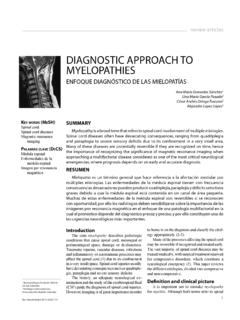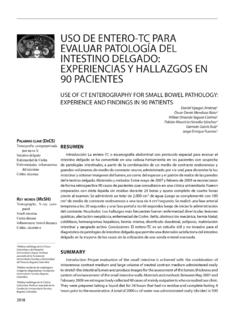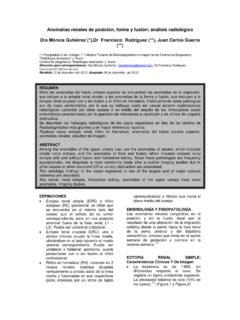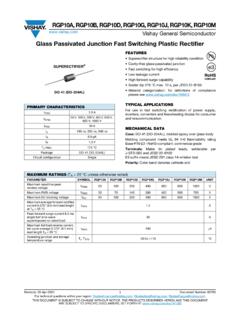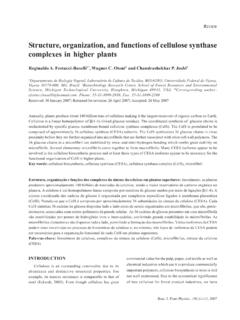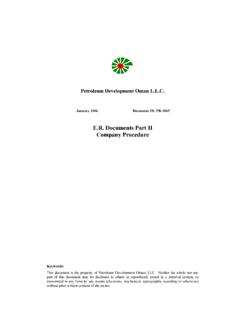Transcription of CharaCterization of DermatologiCal lesions by …
1 4006review articles<Palabras clave (DeCS)Ultrasonograf aQuiste epid rmicoCarcinoma basocelularLipomaBiopol merosSeno pilonidalGeles de siliconaCharaCterization of DermatologiCal lesions by UltrasoUnDCaracterizaci n de lesiones dermatol gicas por ecograf aClaudia Patricia Gonz lez D az1 SummaryIntroduction: At the present day the use of high resolution transducers have allowed significant progress in characterizing skin lesions , providing anatomical information such as size, depth, vascularization, calcium deposits, cyst or solid contents and even hair.
2 Objective: the objective of this article is to review the ultrasound characteristics of skin lesions , like: infections, tumors, and traumas. methodology: for its methodology, we use ultrasound images of outpatients seen at our institution. Conclusion: we conclude that ultrasound is a useful tool that provides additional clinical information for the management of multiple skin lesions . Resumenintroducci n: En la actualidad, el uso de transductores de alta resoluci n ha permitido avances muy importantes en la caracterizaci n de lesiones dermatol gicas, brindando informaci n anat mica como tama o, profundidad, patr n de vascularizaci n, dep sitos de calcio, contenido s lido o qu stico e, incluso, elementos como cabello.
3 Objetivo: Revisar las caracter sticas ecogr ficas de lesiones cut neas de diferentes etiolog as, como infecciosas, tumorales y traum ticas. metodolog a: Se utilizaron las im genes ecogr ficas correspondientes a pacientes de consulta externa vistos en nuestra instituci n. Conclusi n: Se concluye que la ecograf a es una herramienta muy til que aporta informaci n adicional al cl nico para el manejo de m ltiples lesiones dermatol is a very important diagnostic modality in the research of DermatologiCal diseases (1-3), given that it enables to perform early diagnosis, determine the degree and activity and severity of the disease and provide precise anatomical information which enables to adequately plan the surgical procedures.
4 Even when magnetic resonance is frequently recommended for pre-surgical evaluation, requires the use of endovenous contrast and has proven to be less effective in the detection of lesions under 3 mm (4).Ultrasound is a non-invasive diagnostic method, without ionizing radiation which is adequate for diagnosis and revision uses cases of external consultation patients in our institution, obtained with ultrasound GE logiq P5, with a 12-15 MHz high-resolution lineal considerationsThe study must be performed with a 12-20 MHz high resolution multi-channel lineal transducer, which has the capacity to clearly define the superficial structures such as skin layers.
5 As well as delimit lesions with a diameter of up to 1 mm, or perform a deeper exploration of subcutaneous or muscular lesions which can simulate superficial lesions (5,6). It is essential to have a trained radiologist, with precise knowledge of normal DermatologiCal anatomy and pathology. Ultrasound tools must be found as a field of enlarged vision which enable to delimit the totality of the lesion and the commitment of adjacent structures. Doppler for the evaluation of a vascular pattern in real time and in 3D reconstruction (7,8).
6 Normal skinIt is made up of three layers: epidermis, dermis, and subcutaneous cellular tissue (9). The epidermis has a 1 Radiologist of the Universidad del Rosario. Organizaci n Colsanitas. Clinicentro calle 99. Bogot , words (MeSH)UltrasonographyEpidermal cystCarcinoma, basal cellLipomaBiopolymersPilonidal sinusSilicone gels4007review articlesrev. Colomb. radiol. 2014; 25(3): 4006-14highly pleomorphic cellular content and it is not vascularized. Its nutrition is enhanced due to diffusion of the dermic circulation. The main cellular types of the epidermis are keratocytes, melanocytes and Langerhans cells (10,11).
7 One can see a highly hyperechoic lineal layer, due to its high content of keratin and collagen (figure 1).The dermis corresponds to the skin support structure. Histologically, it is dominated by packages of organized collagen, providing the mechanical function of the skin. It includes lymphatic vessels, nerves, the profound portion of the pilose follicles and the sweat glands. A hyperechoic band can be seen in the ultrasound, with variable width, depending on the area of the body; in older persons or with high solar exposure it can turn hypoechoic due to trophic changes (12).
8 The subcutaneous cellular tissue is made up of fatty lobes separated by partitions. A hypoechoic layer can be seen in the ultrasound, separated by hyperechoic lineal partitions (figure 2).Tumor pathology- Epidermal cyst- Pilomaxitroma- Lipomatous tumors - Pilonidal cyst- Endometrioma- Dermoid- Basal cell carcinomasEpidermic cystEpidermic cysts are originated by the implantation of epidermic elements in the dermis and the subcutaneous cellular tissue, in the infundibular portion of the pilose follicle (their origin is not sebaceous and it must not be called that way) (13).
9 The causes of the cysts can be congenital, traumatic or previous surgeries. Clinically, it presents itself as an erythematosus and painful node which drains whitish , they contain keratin, cholesterol and calcifications. In the ultrasound one can see a mass with an oval configuration, hyperechoic, with a duct which connects to the surface called punctum and posterior acoustic reinforcement (figures 3 and 4).PilomatrixomasThey are benign tumors derived from the hair matrix. They are also called pilomatricomas or Melherbe calcified epitheliomas (14).
10 Clinically, they are more common in children and young adults, and they especially affect the head, the hand, the neck, and the limbs (15).Usually, they appear as a single node, but occasionally they may present themselves as multiple nodes. The clinical diagnosis can be incorrect up to 56% of cases, given that they can be easily be mistaken for other benign tumors such as epidermal cysts (16).The classic ultrasound appearance is a target-shaped lesion, characterized by a hyperechoic solid mass with a hypoechoic halo. They present point-like calcifications, with a posterior acoustic shadow as a diagnostic key, which can be single or multiple (17).

